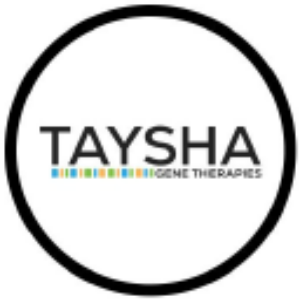Taysha Gene Therapies Reports First Quarter 2025 Financial Results and Provides Corporate Update
Rhea-AI Summary
Positive
- FDA alignment achieved on pivotal trial design with streamlined pathway, eliminating need for end-of-phase meeting
- Positive safety profile with no treatment-related SAEs or DLTs in both high and low doses across 10 patients
- Strong cash position of $116.6M, supporting operations into Q4 2026
- Reduced R&D expenses by $5.1M compared to Q1 2024
Negative
- Net loss of $21.5M in Q1 2025
- Increased general and administrative expenses by $1.1M compared to Q1 2024
News Market Reaction 1 Alert
On the day this news was published, TSHA gained 8.02%, reflecting a notable positive market reaction.
Data tracked by StockTitan Argus on the day of publication.
Obtained written alignment from the FDA on key elements of TSHA-102 pivotal Part B trial design and next steps on enabling study initiation
The FDA advised the Company to submit pivotal Part B trial protocol and associated statistical analysis plan as an amendment to the IND application, eliminating the need for formal end-of-phase meeting and potentially expediting study initiation and registration; IND amendment submission expected in Q2 2025
High dose and low dose of TSHA-102 continue to be generally well tolerated with no treatment-related SAEs or DLTs in the pediatric, adolescent and adult patients treated (high dose, n=6; low dose, n=4) across both REVEAL trials as of April 10, 2025, data cutoff
Program update on pivotal trial design, Rett syndrome natural history data analysis and clinical data from cohort two (high dose) and cohort one (low dose) of both REVEAL trials expected in Q2 2025 in conjunction with IRSF Rett Syndrome Scientific Meeting
Conference call and live webcast today at 8:30 AM Eastern Time
DALLAS, May 15, 2025 (GLOBE NEWSWIRE) -- Taysha Gene Therapies, Inc. (Nasdaq: TSHA) (“Taysha” or the “Company”), a clinical-stage biotechnology company focused on advancing adeno-associated virus (AAV)-based gene therapies for severe monogenic diseases of the central nervous system (CNS), today reported financial results for the first quarter ended March 31, 2025, and provided a corporate update.
“We are pleased with the significant regulatory and clinical progress across our TSHA-102 program in clinical evaluation for children, adolescents and adults suffering from Rett syndrome. We believe our interactions with the U.S. FDA under the RMAT mechanism have consistently been productive and continue to support a clear path to registration,” said Sean P. Nolan, Chairman and Chief Executive Officer of Taysha. “Importantly, we reached alignment with the FDA on key elements of the pivotal Part B trial design for TSHA-102 and next steps on enabling study initiation. Subsequently, the FDA advised us to proceed directly to submitting our pivotal trial protocol and associated statistical analysis plan as an amendment to the IND application, which we expect to submit in the current quarter. By eliminating the need for a formal end-of-phase meeting, this approach may expedite study initiation and registration.”
Mr. Nolan continued, “We believe the progress we’ve made with the FDA on our registrational pathway supports the strength of our data-driven approach and further enables our goal to bring TSHA-102 to patients with this devastating disease as expeditiously as possible. We anticipate providing a fulsome regulatory update and clinical data from our two REVEAL trials in conjunction with the annual IRSF Rett Syndrome Scientific Meeting in the current quarter.”
Recent Corporate and TSHA-102 Program Highlights
- Regulatory Progress Supports Advancement to Pivotal Part B Trial Based on Written Alignment from the FDA. The Company reached alignment with the FDA on key elements of the pivotal Part B trial design and next steps for enabling study initiation for TSHA-102 following discussions under the Regenerative Medicine Advanced Therapy (RMAT) pathway. Subsequently, the FDA advised the Company to submit the pivotal Part B trial protocol along with the associated statistical analysis plan (SAP) as an amendment to its Investigational New Drug (IND) application. This approach eliminates the need for a formal end-of-phase meeting, which may expedite study initiation and registration. The Company expects to submit the IND amendment in the second quarter of 2025.
- High and Low Dose of TSHA-102 Continue to be Generally Well Tolerated. High dose (1x1015 total vector genomes (vg)) and low dose (5.7x1014 total vg) of TSHA-102 continue to be generally well tolerated with no treatment-related serious adverse events (SAEs) or dose-limiting toxicities (DLTs) in the 10 pediatric, adolescent and adult patients dosed across the two REVEAL Phase 1/2 trials as of the April 10, 2025, data cutoff. This includes six patients in the high dose cohort and four patients in the low dose cohort.
- Three Abstracts Accepted for Oral Presentations at 2025 International Rett Syndrome Foundation (IRSF) Rett Syndrome Scientific Meeting. Taysha will host three oral presentations related to TSHA-102 at the upcoming 2025 IRSF Rett Syndrome Scientific Meeting taking place in Boston from June 9–11, 2025.
Anticipated Milestones
- TSHA-102 Program Update on Clinical and Regulatory Progress. In the second quarter of 2025 during a program update in conjunction with the 2025 IRSF Rett Syndrome Scientific Meeting, Taysha expects to provide an update on:
- Pivotal trial design for TSHA-102;
- Rett syndrome natural history data analysis; and
- Safety and efficacy data for cohort two (high dose; n=6) and cohort one (n=4) from the REVEAL Phase 1/2 adolescent and adult trial and the REVEAL Phase 1/2 pediatric trial
First Quarter 2025 Financial Highlights
Research and Development Expenses: Research and development expenses were
General and Administrative Expenses: General and administrative expenses were
Net Loss: Net loss for the three months ended March 31, 2025, was
Cash and Cash Equivalents: As of March 31, 2025, Taysha had
Conference Call and Webcast Information
Taysha management will hold a conference call and webcast today at 8:30 AM ET to review its financial and operating results and provide a corporate update. The dial-in number for the conference call is 877-407-0792 (U.S./Canada) or 201-689-8263 (international). The conference ID for all callers is 13753490. The live webcast and replay may be accessed by visiting Taysha’s website.
About TSHA-102
TSHA-102 is a self-complementary intrathecally delivered AAV9 investigational gene transfer therapy in clinical evaluation for Rett syndrome. Designed as a one-time treatment, TSHA-102 aims to address the genetic root cause of the disease by delivering a functional form of MECP2 to cells in the CNS. TSHA-102 utilizes a novel miRNA-Responsive Auto-Regulatory Element (miRARE) technology designed to mediate levels of MECP2 in the CNS on a cell-by-cell basis without risk of overexpression. TSHA-102 has received Regenerative Medicine Advanced Therapy, Fast Track and Orphan Drug and Rare Pediatric Disease designations from the FDA, Orphan Drug designation from the European Commission and Innovative Licensing and Access Pathway designation from the Medicines and Healthcare products Regulatory Agency.
About Rett Syndrome
Rett syndrome is a rare neurodevelopmental disorder caused by mutations in the X-linked MECP2 gene encoding methyl CpG-binding protein 2 (MeCP2), which is essential for regulating neuronal and synaptic function in the brain. The disorder is characterized by loss of communication and hand function, slowing and/or regression of development, motor and respiratory impairment, seizures, intellectual disabilities and shortened life expectancy. Rett syndrome progression is divided into four key stages, beginning with early onset stagnation at 6 to 18 months of age followed by rapid regression, plateau and late motor deterioration. Rett syndrome primarily occurs in females and is one of the most common genetic causes of severe intellectual disability. Currently, there are no approved disease-modifying therapies that treat the genetic root cause of the disease. Rett syndrome caused by a pathogenic/likely pathogenic MECP2 mutation is estimated to affect between 15,000 and 20,000 patients in the U.S., EU, and U.K.
About Taysha Gene Therapies
Taysha Gene Therapies (Nasdaq: TSHA) is a clinical-stage biotechnology company focused on advancing adeno-associated virus (AAV)-based gene therapies for severe monogenic diseases of the central nervous system. Its lead clinical program TSHA-102 is in development for Rett syndrome, a rare neurodevelopmental disorder with no approved disease-modifying therapies that address the genetic root cause of the disease. With a singular focus on developing transformative medicines, Taysha aims to address severe unmet medical needs and dramatically improve the lives of patients and their caregivers. The Company’s management team has proven experience in gene therapy development and commercialization. Taysha leverages this experience, its manufacturing process and a clinically and commercially proven AAV9 capsid in an effort to rapidly translate treatments from bench to bedside. For more information, please visit www.tayshagtx.com.
Forward-Looking Statements
This press release contains forward-looking statements within the meaning of the Private Securities Litigation Reform Act of 1995. Words such as “anticipates,” “believes,” “expects,” “intends,” “projects,” “plans,” and “future” or similar expressions are intended to identify forward-looking statements. Forward-looking statements include statements concerning the potential of TSHA-102, including the reproducibility and durability of any favorable results initially seen in patients dosed to date in clinical trials, including with respect to functional milestones, and our other product candidates to positively impact quality of life and alter the course of disease in the patients we seek to treat, our research, development and regulatory plans for our product candidates, including the timing of initiating additional trials and reporting data from our clinical trials, advice from the FDA on the regulatory pathway for TSHA-102, the potential for these product candidates to receive regulatory approval from the FDA or equivalent foreign regulatory agencies, and our current cash resources supporting our planned operating expenses and capital requirements into the fourth quarter of 2026. Forward-looking statements are based on management’s current expectations and are subject to various risks and uncertainties that could cause actual results to differ materially and adversely from those expressed or implied by such forward-looking statements. Accordingly, these forward-looking statements do not constitute guarantees of future performance, and you are cautioned not to place undue reliance on these forward-looking statements. Risks regarding our business are described in detail in our Securities and Exchange Commission (“SEC”) filings, including in our Annual Report on Form 10-K for the full-year ended December 31, 2024, which is available on the SEC’s website at www.sec.gov. Additional information will be made available in other filings that we make from time to time with the SEC. These forward-looking statements speak only as of the date hereof, and we disclaim any obligation to update these statements except as may be required by law.
| Taysha Gene Therapies, Inc. | ||||||||
| Condensed Consolidated Statements of Operations | ||||||||
| (in thousands, except share and per share data) | ||||||||
| For the Three Months Ended March 31, | ||||||||
| 2025 | 2024 | |||||||
| Revenue | $ | 2,302 | $ | 3,411 | ||||
| Operating expenses: | ||||||||
| Research and development | 15,565 | 20,657 | ||||||
| General and administrative | 8,158 | 7,084 | ||||||
| Total operating expenses | 23,723 | 27,741 | ||||||
| Loss from operations | (21,421) | (24,330) | ||||||
| Other income (expense): | ||||||||
| Change in fair value of warrant liability | 102 | (337) | ||||||
| Change in fair value of term loan | (1,530) | (1,053) | ||||||
| Interest income | 1,326 | 1,693 | ||||||
| Interest expense | (19) | (29) | ||||||
| Other income (expense) | 13 | (5) | ||||||
| Total other income (expense), net | (108) | 269 | ||||||
| Net loss | $ | (21,529) | $ | (24,061) | ||||
| Net loss per common share, basic and diluted | $ | (0.08) | $ | (0.10) | ||||
| Weighted average common shares outstanding, basic and diluted | 269,306,331 | 231,249,344 | ||||||
| Taysha Gene Therapies, Inc. | ||||||||
| Condensed Consolidated Balance Sheet Data | ||||||||
| (in thousands, except share and per share data) | ||||||||
| March 31, 2025 | December 31, 2024 | |||||||
| ASSETS | ||||||||
| Current assets: | ||||||||
| Cash and cash equivalents | $ | 116,593 | $ | 139,036 | ||||
| Restricted cash | 449 | 449 | ||||||
| Prepaid expenses and other current assets | 3,666 | 2,645 | ||||||
| Total current assets | 120,708 | 142,130 | ||||||
| Restricted cash | 2,151 | 2,151 | ||||||
| Property, plant and equipment, net | 7,236 | 7,485 | ||||||
| Operating lease right-of-use assets | 8,079 | 8,381 | ||||||
| Other non-current assets | 188 | 217 | ||||||
Total assets | $ | 138,362 | $ | 160,364 | ||||
| LIABILITIES AND STOCKHOLDERS' EQUITY | ||||||||
| Current liabilities: | ||||||||
| Accounts payable | $ | 4,326 | $ | 3,592 | ||||
| Accrued expenses and other current liabilities | 10,761 | 12,862 | ||||||
| Deferred revenue | 7,470 | 9,773 | ||||||
| Total current liabilities | 22,557 | 26,227 | ||||||
| Term loan, net | 42,453 | 43,942 | ||||||
| Operating lease liability, net of current portion | 17,093 | 17,361 | ||||||
| Other non-current liabilities | 1,200 | 1,309 | ||||||
| Total liabilities | 83,303 | 88,839 | ||||||
| Stockholders' equity | ||||||||
| Preferred stock, | — | — | ||||||
| Common stock, | 2 | 2 | ||||||
| Additional paid-in capital | 681,177 | 677,859 | ||||||
| Accumulated other comprehensive loss | (2,286) | (4,031) | ||||||
| Accumulated deficit | (623,834) | (602,305) | ||||||
| Total stockholders’ equity | 55,059 | 71,525 | ||||||
| Total liabilities and stockholders' equity | $ | 138,362 | $ | 160,364 | ||||
Company Contact:
Hayleigh Collins
Senior Director, Corporate Communications and Investor Relations
Taysha Gene Therapies, Inc.
hcollins@tayshagtx.com
Media Contact:
Carolyn Hawley
Inizio Evoke
Carolyn.hawley@inizioevoke.com








